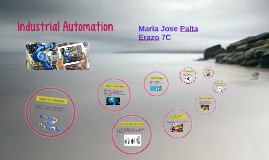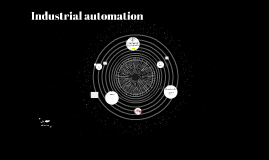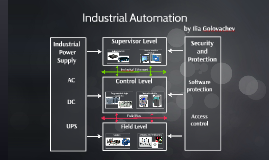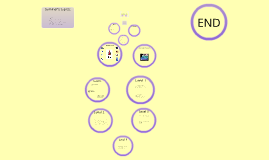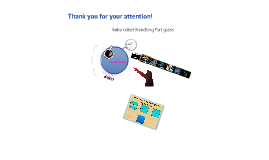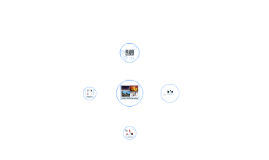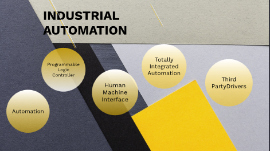Industrial Automation
Transcript: Safety through Crane Algorithm New 1000 Series- Key Features J1000 5 frame sizes 23 ~ 105A 145 ~ 220A 255A 360 ~ 930A 1200 ~1600A 4 control voltages 110 ~ 220V AC 230 ~ 440V AC 24VDC 24VAC (optional) 630 Range 200 V, 3-phase power supply, 1.2 - 69A (0.2kW – 18.5kW, ND) 400 V, 3-phase power supply, 1.2 - 38A (0.2kW to 18.5kW, ND) Overload Capacity 150% (HD) or 120% (ND) for 60 sec Power Supply 200~240 V 3-phase 50/60 Hz 380~480 V 3-phase 50/60 Hz *Allowable voltage fluctuation -15%/+10% A1000 Series Applications V1000 Series- Specifications A1000 - C for Crane Control Product Range 0.4 EMX3 Soft Starters AC drives- Product range V1000 LnTOUCH HMI 4.3” TO 15” screen Multi-language, Graphics, Extended alarms Recipe, Data logging, Printing, Ethernet Fieldbus communication A1000 Series- Specifications Features Regenerative converter available from 5kW to 370kW Low power supply harmonics ensuring less input current distortion with unity power factor at rated load Multi drives can be connected to single D1000 ensuring saving of regenerated energy and low harmonics at improved power factor Multi drives combination useful for overhead cranes, escalator, automatic parking system, weaving machines, HVAC apps & many other Overload of 150% for 1min&200% for 3sec Brake opening command by Drive under following condition Inverter Output Frequency > Brake Release Frequency AND Inverter Output Current > Brake Release Current AND Inverter Torque > Torque Compensation Value Ensures Slip prevention Different settings possible for Hoisting & Lowering Motion Special “S” parameter group only for crane drives PLC & HMI V1000 Range from 7.5 to 110kW Range from 18A to 220A Control voltage: 110 V - 240VAC : 380V - 440VAC Time based start & stop ramp EMX3 World’s smallest drive V/f Control Built-in braking transistor High Flux Braking Unique maintenance monitor RS-485 MODBUS Communication (Optional) Low-noise technology Tree Program Structure 5 DI, 1 DO, 1 AI, 1 AO Features Compact Design Built-in bypass contactor Time based start & stop ramp Complements existing motor protection Programming through trim pot Flexible soft starting profiles (CSXi) Safety AC Inverter Drives Safe disable inputs Built-in RS-485 port @ 115.2 kbps Last 10 faults stored Peak current @ frequency recorded Fault trace of last fault Application presets 200 V class: 1.5 to 110 kW 400 V class: 1.5 to 110 kW CSX and CSXi Series- Specifications D1000 V1000 Series Applications Soft Starter Smooth & Comfortable Ride J1000 Series- Specifications A1000 Range 23 Models 23A ~ 1600A 7.5 ~ 800kW 2 Voltage Ranges 200 ~ 440V AC 380 ~ 690V AC Protection IP20 EMX-0023B EMX3-0105B IP00 EMX-0145B EMX3-1600C 18.5 D1000 A1000 Power-through Servo & Motion Control V1000 Series- Compact & Powerful V/f , V/f with feedback, OLV & Flux vector 200% starting torque @ 0 RPM in closed loop Speed range 1:1500 Swing PWM for low motor noise for all ND Built-in braking transistor upto 30kW Detachable terminal block with memory Standard conformal coating in all ratings CSX & CSXi Runs Induction and Synchronous Motors Compatible with a Wide Range of Encoders Loaded with Auto-Tuning Features Designed Compact for Tight Machine Rooms Reduced Operation Time and More Powerful Braking Extensive Product Lineup LX Series PLC 10 to 8192 I/Os Embedded Ethernet, USB, SD Card RoHS, CE, CULuS certification Embedded Web Server Modular Micro PLC J1000 Series Applications Robust control terminals Real time metering and monitoring Adjustable bus-bars Serial programming and control Suitable for Asynchronous & PM motor Designed for 10 years of performance life Rated for 50ºC without derating Unique maintenance monitor function Intelligent detachable control terminals Adapted to tropical conditions (conformal coating) Features a USB port for easier communication Key features of Crane Algorithm A1000 Series- High Performance EMX3- Key features EMX3- Key features Rescue Operation Light Load Search Detection Function Safe Disable Function Fault Detection During Run Preventative Warnings Long-life Performance Range 400 V, 3-phase power supply, 1.2 - 1200A (0.4kW to 630kW, ND) Overload Capacity 150% (HD) or 120% (ND) for 60 sec Power Supply 380~480 V 3-phase 50/60 Hz *Allowable voltage fluctuation -15%/+10% Matching Every Need Smooth Operation Overshoot and Anti-Vibration Control Variety of Braking Functions High Performance Starting Torque w/o Sensors (Anti-rollback) Range 200 V, single-phase power supply, 1.2 - 9.6A (0.4 – 2.2kW, ND) 400 V, 3-phase power supply, 1.2 – 11.1A (0.4 – 5.5kW, ND) Overload Capacity 150% (HD) or 120% (ND) for 60 sec Power Supply 200~240 V single-phase 50/60 Hz 380~480 V 3-phase 50/60 Hz *Allowable voltage fluctuation -15% to +10% V/f and Open loop control 200% starting torque at 0.5 Hz Dual Microprocessor Built-in braking transistor Online auto tuning Application preset Built-in MODBUS communication port No deration required upto 8kHz carrier freq 7 DI , 3 DO, 2 AI, 1 AO 5.5 Industrial






